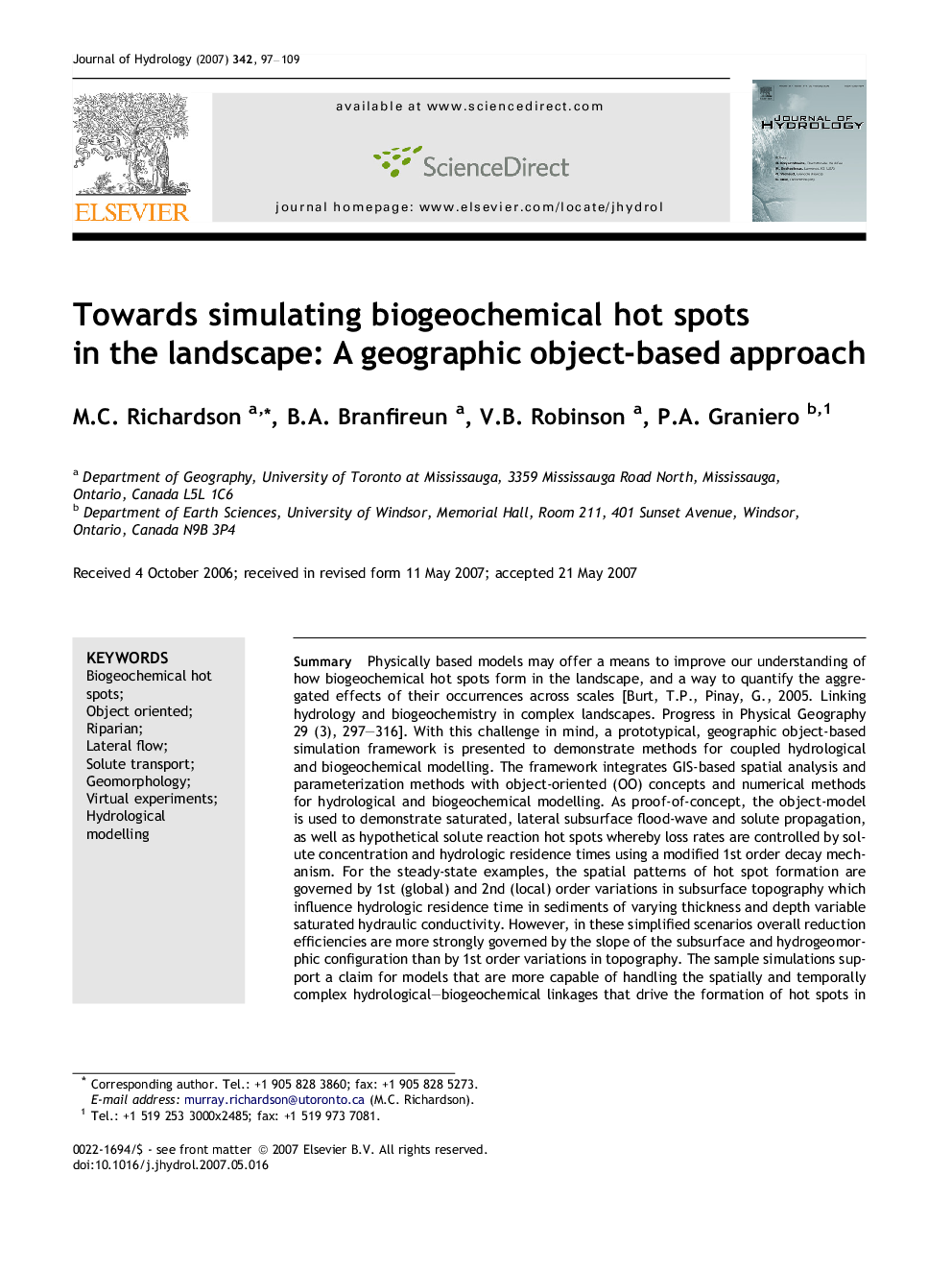| کد مقاله | کد نشریه | سال انتشار | مقاله انگلیسی | نسخه تمام متن |
|---|---|---|---|---|
| 4579861 | 1630132 | 2007 | 13 صفحه PDF | دانلود رایگان |

SummaryPhysically based models may offer a means to improve our understanding of how biogeochemical hot spots form in the landscape, and a way to quantify the aggregated effects of their occurrences across scales [Burt, T.P., Pinay, G., 2005. Linking hydrology and biogeochemistry in complex landscapes. Progress in Physical Geography 29 (3), 297–316]. With this challenge in mind, a prototypical, geographic object-based simulation framework is presented to demonstrate methods for coupled hydrological and biogeochemical modelling. The framework integrates GIS-based spatial analysis and parameterization methods with object-oriented (OO) concepts and numerical methods for hydrological and biogeochemical modelling. As proof-of-concept, the object-model is used to demonstrate saturated, lateral subsurface flood-wave and solute propagation, as well as hypothetical solute reaction hot spots whereby loss rates are controlled by solute concentration and hydrologic residence times using a modified 1st order decay mechanism. For the steady-state examples, the spatial patterns of hot spot formation are governed by 1st (global) and 2nd (local) order variations in subsurface topography which influence hydrologic residence time in sediments of varying thickness and depth variable saturated hydraulic conductivity. However, in these simplified scenarios overall reduction efficiencies are more strongly governed by the slope of the subsurface and hydrogeomorphic configuration than by 1st order variations in topography. The sample simulations support a claim for models that are more capable of handling the spatially and temporally complex hydrological–biogeochemical linkages that drive the formation of hot spots in the landscape. Further development of this approach is advocated to provide a tool for exploratory analysis and hypothesis formulation and testing regarding landscape controls on hydrology and biogeochemistry.
Journal: Journal of Hydrology - Volume 342, Issues 1–2, 15 August 2007, Pages 97–109